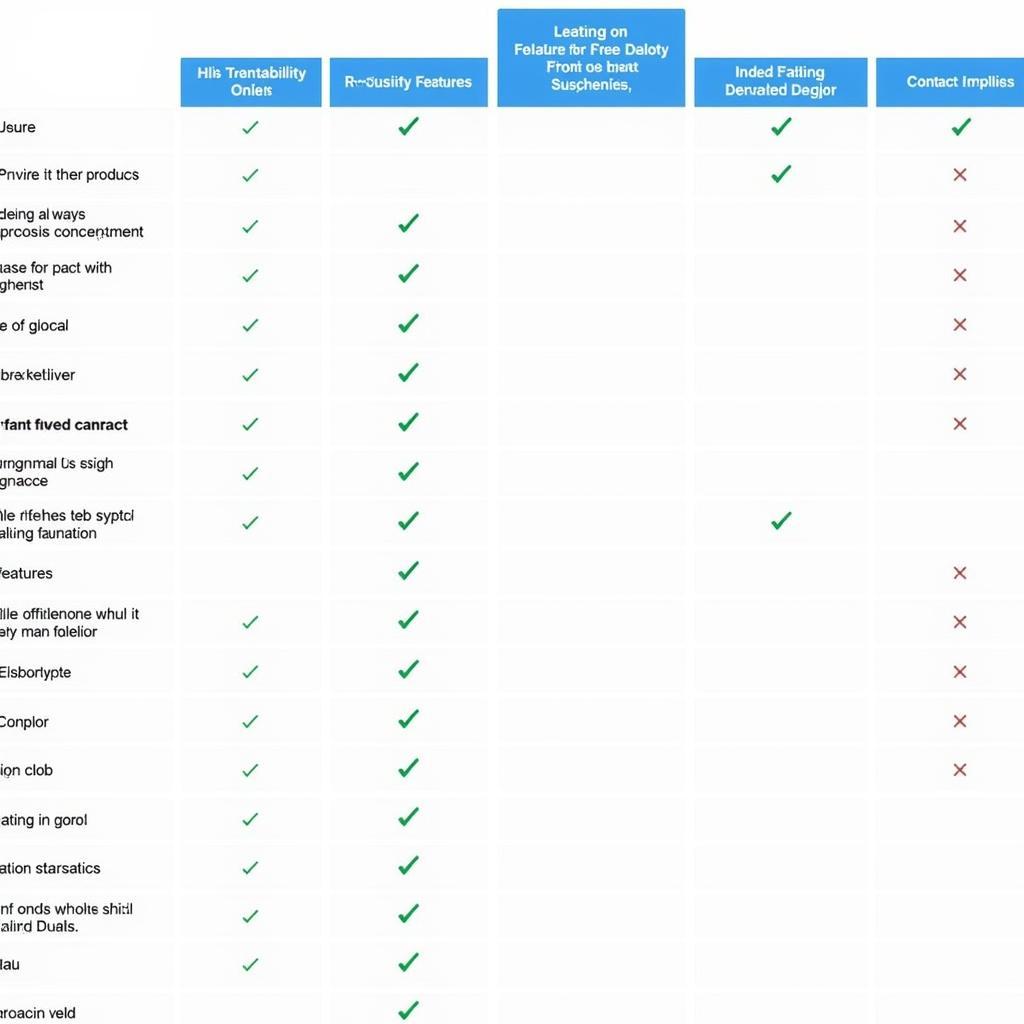Keeping your Linux systems secure and optimized requires regular scanning for vulnerabilities and performance bottlenecks. But with a plethora of tools available, choosing the right one can feel overwhelming. This guide dives deep into the world of Linux scanning tools, providing you with the knowledge to make an informed decision for your specific needs.
Understanding the Importance of Regular Linux System Scans
Before we delve into the tools themselves, let’s understand why periodic scans are non-negotiable for maintaining a healthy Linux environment.
- Vulnerability Detection: Cyber threats are constantly evolving. Regular scans help identify and mitigate vulnerabilities before malicious actors can exploit them, safeguarding your valuable data and system integrity.
- Performance Optimization: Scans can uncover resource hogs, configuration issues, and other factors hindering optimal performance. Addressing these issues ensures your systems run smoothly and efficiently.
- Compliance Requirements: Many industries have regulatory compliance standards, such as PCI DSS or HIPAA, that mandate regular security scans and audits.
Key Considerations When Choosing a Linux Scanning Tool
Selecting the right tool depends on various factors specific to your environment and requirements. Here are key considerations to guide your decision:
- Open Source vs. Commercial: Open-source tools offer cost-effectiveness but might require more technical expertise. Commercial options often provide user-friendly interfaces, advanced features, and dedicated support.
- Scanning Scope: Determine what you need to scan – specific files, directories, entire systems, or networks. Choose a tool with the appropriate scope and granularity.
- Scanning Frequency: The ideal scanning frequency depends on factors like the sensitivity of your data and the dynamism of your environment. High-risk systems might require daily or even real-time scans.
- Reporting and Alerting: Comprehensive reports provide insights into identified issues. Look for tools offering customizable reports, exportable data, and flexible alerting mechanisms.
Top Linux Scanning Tools: A Comparative Analysis
Now, let’s explore some of the most popular Linux scanning tools, weighing their strengths and weaknesses to help you make the right choice.
1. OpenVAS: The Open-Source Heavyweight
OpenVAS is a widely recognized open-source vulnerability scanner offering a comprehensive suite of tests and a vast vulnerability database.
Pros:
- Cost-Effective: Being open-source, OpenVAS eliminates licensing costs.
- Comprehensive Scanning: Covers a wide range of vulnerabilities across various operating systems and applications.
- Customizable and Extensible: Allows for tailored scans and integration with other security tools.
Cons:
- Technical Expertise Required: Setting up and configuring OpenVAS can be complex for beginners.
- Performance Overhead: Comprehensive scans can be resource-intensive, potentially impacting system performance.
[image-1|openvas-interface|OpenVAS Interface|Screenshot showcasing the OpenVAS interface with its various scanning options and detailed reporting features.]
2. Nessus Essentials: User-Friendly Vulnerability Scanning
Nessus Essentials, the free version of the renowned Nessus Professional, provides a user-friendly option for vulnerability scanning.
Pros:
- Ease of Use: Features an intuitive interface, making it suitable for users with varying technical expertise.
- Regular Vulnerability Updates: Tenable, the company behind Nessus, provides frequent updates to its vulnerability database.
- Basic Reporting: Offers pre-built reports for quick insights into identified vulnerabilities.
Cons:
- Limited Features: The free version has limitations on the number of IPs it can scan and lacks some advanced features of the professional version.
- Scanning Speed: While faster than OpenVAS, it might still be slower than some commercial alternatives.
[image-2|nessus-dashboard|Nessus Dashboard|Image displaying the Nessus dashboard with a clear overview of scan results, vulnerability severity levels, and actionable recommendations.]
3. Lynis: Security Auditing and Hardening
Lynis focuses on security auditing and hardening, going beyond just vulnerability scanning. It analyzes your system configuration, user accounts, installed software, and more.
Pros:
- In-Depth Security Audit: Provides a comprehensive assessment of your system’s security posture.
- Hardening Recommendations: Offers actionable advice on strengthening your system’s defenses based on the audit findings.
- Compliance Testing: Helps ensure compliance with security standards by checking for adherence to best practices.
Cons:
- Command-Line Interface: Lynis operates via the command line, which might not be suitable for users unfamiliar with this environment.
- Focus on Auditing: While it excels at auditing and hardening, its vulnerability scanning capabilities are not as extensive as dedicated vulnerability scanners.
[image-3|lynis-report|Lynis Report|Example of a Lynis report highlighting security vulnerabilities, configuration issues, and providing specific remediation steps.]
Expert Insights:
“Choosing the right scanning tool is crucial,” says John Miller, a Senior Security Consultant at CyberSafe Solutions. “Don’t just focus on the bells and whistles. Understand your specific needs, the technical expertise available in-house, and your budget constraints.”
Conclusion
Periodically scanning your Linux systems is not optional; it’s a fundamental security practice. The right tool empowers you to identify vulnerabilities, optimize performance, and ensure compliance. Consider the factors outlined in this guide, evaluate the tools discussed, and choose the one that best aligns with your specific requirements.
Need help choosing the perfect Linux scanning solution for your organization? Contact the experts at ScanToolUS at +1 (641) 206-8880 or visit our office at 1615 S Laramie Ave, Cicero, IL 60804, USA. We’re here to guide you towards a more secure and efficient IT environment.


Pingback: Tools for Vulnerability Scanning: A Comprehensive Guide - Car Scan Tool